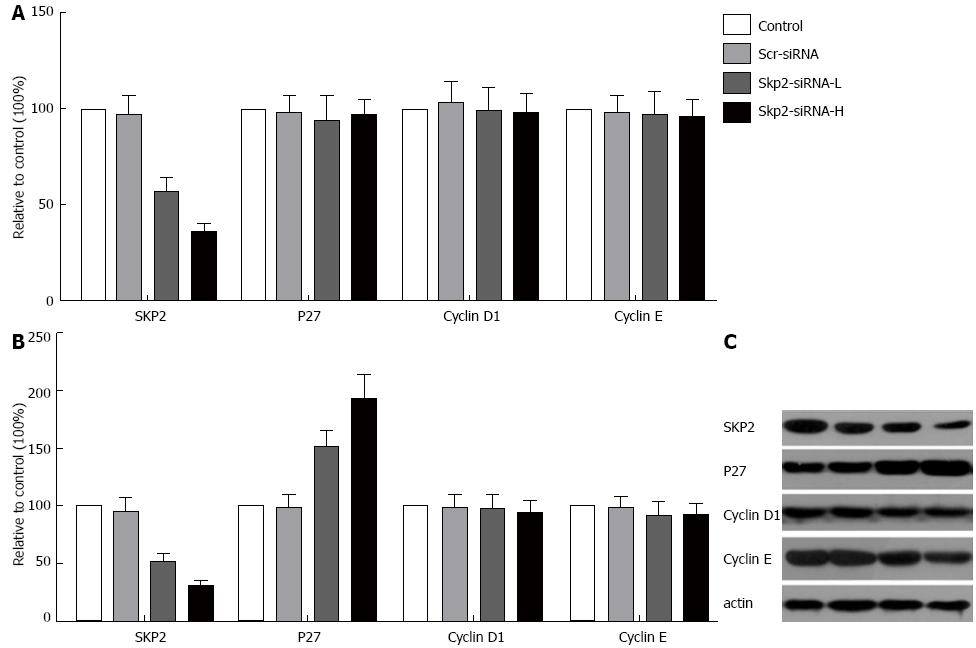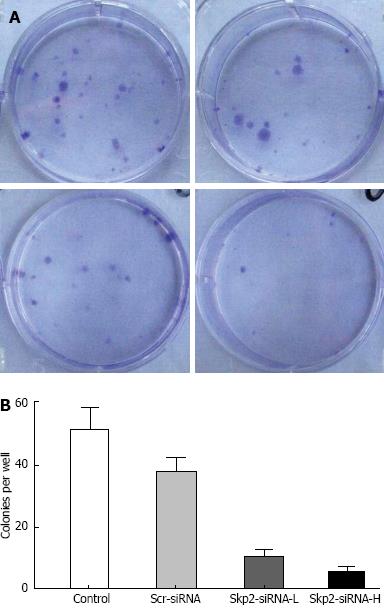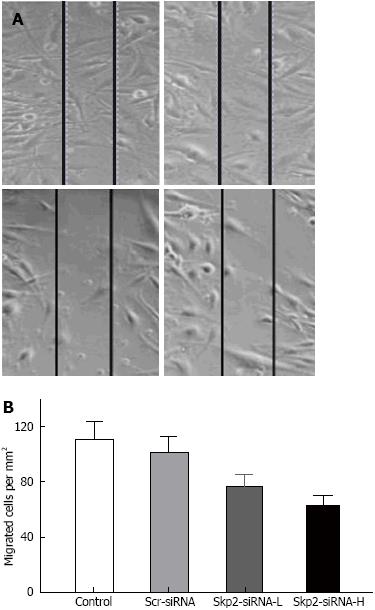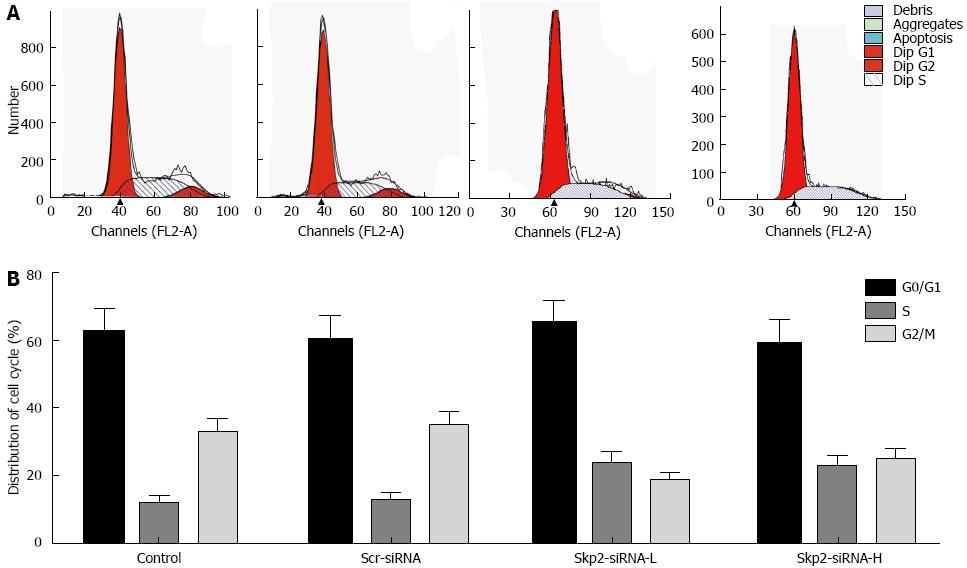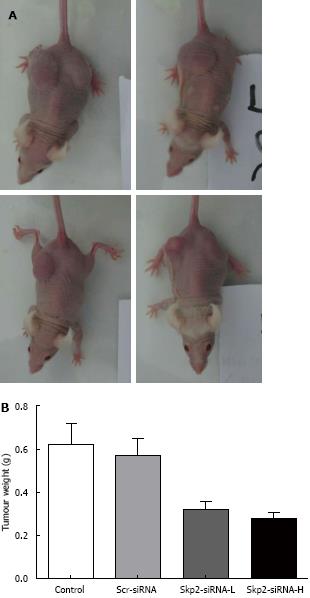Copyright
©2013 Baishideng Publishing Group Co.
World J Gastroenterol. Aug 14, 2013; 19(30): 4917-4924
Published online Aug 14, 2013. doi: 10.3748/wjg.v19.i30.4917
Published online Aug 14, 2013. doi: 10.3748/wjg.v19.i30.4917
Figure 1 Detection of downstream gene and protein expression after kinase-associated protein-2-RNAi transfection.
A: Expression of p27 mRNA did not change following down-regulation of S-phase kinase-associated protein-2 (Skp2); B and C: Protein expression of p27 was upregulated. Lane 1: Control; Lane 2: Scr-RNAi; Lane 3: Skp2-RNAi-L; Lane 4: Skp2-RNAi-H.
Figure 2 Proliferation curves for the gallbladder carcinoma cell line cells after the inhibition of kinase-associated protein-2 expression.
Cell proliferation was significantly inhibited after down-regulation of S-phase kinase-associated protein-2 (Skp2) by Skp2-RNAi. GBC-SD: The gallbladder carcinoma cell line.
Figure 3 Colony formation assays after inhibition of kinase-associated protein-2 expression.
A: Colony formation assays; B: Colony formation of the gallbladder carcinoma cell line (GBC-SD) cells was significantly inhibited after transfection with S-phase kinase-associated protein-2 (Skp2)-RNAi.
Figure 4 Results of the wound healing assay after inhibition of kinase-associated protein-2 expression.
A: The wound healing assay after inhibition of kinase-associated protein-2 (Skp2) expression; B: The migrated cells in the two S-phase Skp2-RNAi groups were markedly decreased as compared with the two control groups.
Figure 5 Proportion of cells in the cell cycle stages.
A: Detection of the proportion of cells in the cell cycle stages after S-phase kinase-associated protein-2 (Skp2) expression was inhibited; B: The proportion of cells in the S phase of the cell cycle increased, and the proportion of cells in the G2/M phase decreased in Skp2-RNAi-L and Skp2-RNAi-H groups.
Figure 6 Tumorigenicity experiments in nude mice.
A: Tumorigenicity experiments; B: Transfection with S-phase kinase-associated protein-2 (Skp2)-RNAi inhibited the growth of tumor cells.
- Citation: Zhang B, Ji LH, Liu W, Zhao G, Wu ZY. Skp2-RNAi suppresses proliferation and migration of gallbladder carcinoma cells by enhancing p27 expression. World J Gastroenterol 2013; 19(30): 4917-4924
- URL: https://www.wjgnet.com/1007-9327/full/v19/i30/4917.htm
- DOI: https://dx.doi.org/10.3748/wjg.v19.i30.4917









